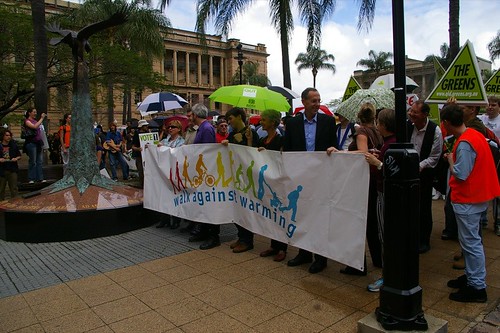24th January 2007,
From Catalyst Commercial (UK).
From the point of view of mitigating climate change, the key question is whether carbon trading will actually reduce carbon emissions. Radical critics, such as Larry Lohmann of the environmental and social NGO the Corner House, argue that trading itself adds nothing to emissions reductions efforts. Certainly, what emerges from closer examination of air pollution trading schemes in general is that their effectiveness depends heavily on scheme design. One issue is the strength or weakness of the underlying curbs set on emissions. In the case of the EU scheme, Cambridge economist Michael Grubb makes the point that its sheer scale means that member states are subject to intense lobbying by economically strategic industries. In the first phase of the scheme, lobbyists across Europe pushed successfully for weak caps. In April 2006, when it became clear that 20 of the 25 member states had set caps for 2005 that were so generous that they were above actual emissions the carbon price immediately collapsed from €25 to around €4 per tonne, where it currently languishes.
Industrial lobbyists also argued successfully for “grandfathering” for allocations to particular installations to be based on their emissions in a reference period rather than on an overall carbon target, as under Kyoto, or on best practice in the industry. If this is repeated in subsequent phases, it will create a perverse incentive for companies to increase emissions, because this will give them a higher allocation in the next phase. In the run-up to the second phase, industrial lobbyists are also arguing for the right to carry over excess credits from the first phase. Member states have placated these interests by adopting complex non-transparent procedures, and in many cases simply by stalling on submitting plans to the point where the commission was threatening legal action in late 2006.
How disastrous is this experience for the EU ETS? Defenders of the scheme say that many of the concessions made to industry weak caps, grandfathering, and other weaknesses like the small fines for non-compliance are politically necessary to get the scheme launched. Once it is running, caps and other features can be tightened. It is true that the first phase of the European scheme was seen as a trial period. But is it credible that the second phase will see a tougher stance? Late last year the commission sent back all the member states’ proposals (with the exception of Britain’s) because they were too lax, but it remains to be seen if governments and their industrial lobbies will play ball.
Similar issues of political credibility would also apply to personal carbon trading. Will people believe a government that says it intends to progressively cut the personal carbon allowance would actually carry out such an unpopular policy or stay in power if it did.
A second concern about the European scheme is that the cap is not only weak but also leaky. Companies that need extra credits to cover their carbon emissions can not only buy them in the market, but can also acquire them by investing in clean development mechanism (CDM) projects the offsetting scheme set up under the Kyoto protocol. How many reduction credits can be acquired in this way varies from country to country, but it is expected that they will make up the majority.
In theory, the CDM is just an extension of the flexibility approach. A tonne of carbon dioxide emissions abated has the same effect anywhere in the world. So if it is cheaper to do this in India or Africa than in Europe, why not do so, especially if, as originally advertised, the CDM also helps transfer renewable energy technologies to the south?
In practice, renewable energy is involved in only 2 per cent of CDM projects. More typical is the deal announced last September, where Centrica (the parent company of British Gas) is investing in technology for capturing emissions of the very potent greenhouse gas HFC-23 from a Chinese chemical company. Some 70 per cent of CDM credits arise from capture projects like this one (arranged by the London-based carbon trading investment bank Climate Change Capital), mainly involving large industrial plants in China, India, Brazil and Korea.
...
Read the article.
Tuesday, January 30, 2007
A Guide To Carbon Trading
Posted by
National Enquirer
at
10:26 am
![]()
Labels: carbon emmisions, carbon rationing, carbon tax, Carbon trading, catalyst commercial, renewable energy
Subscribe to:
Post Comments (Atom)





1 comment:
I am regular visitor, how are you everybody? This article
posted at this site is genuinely nice.
Feel free to visit my blog post :: Recommended Site
Post a Comment